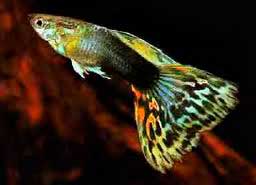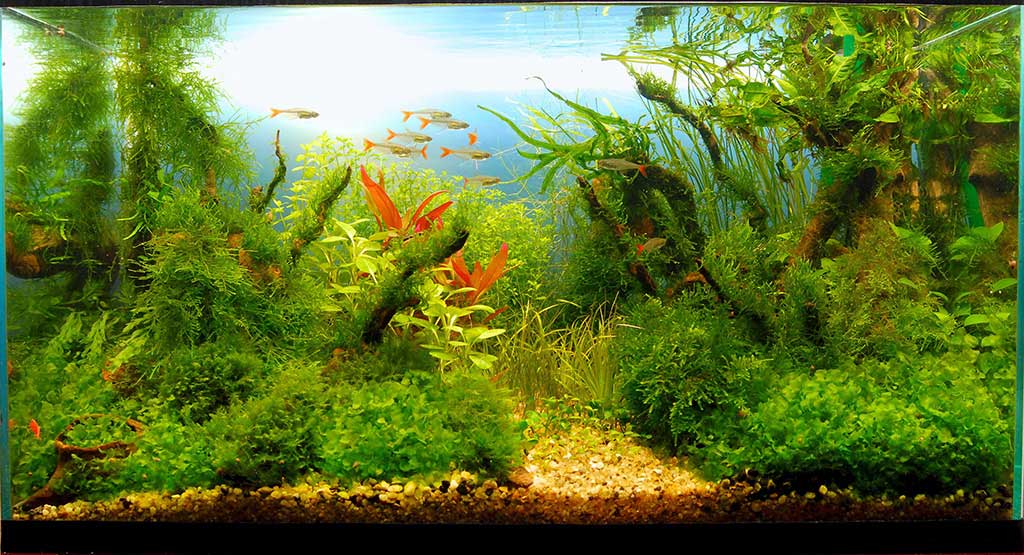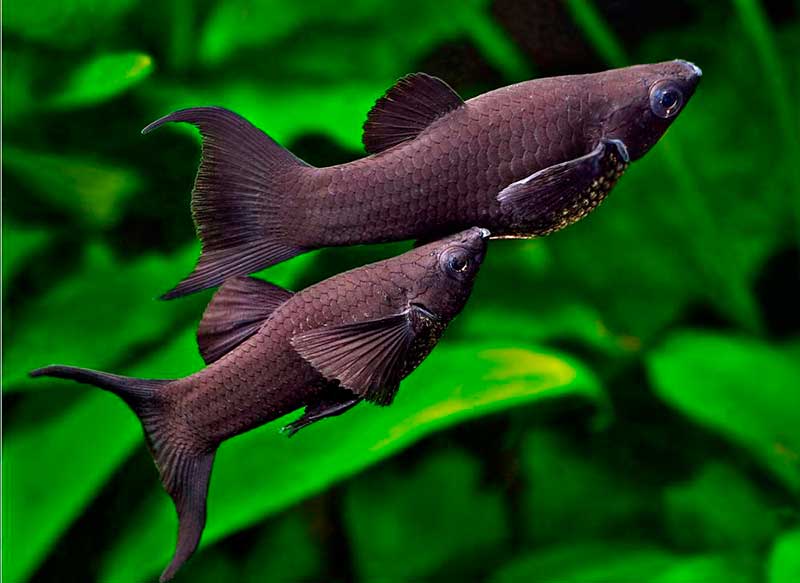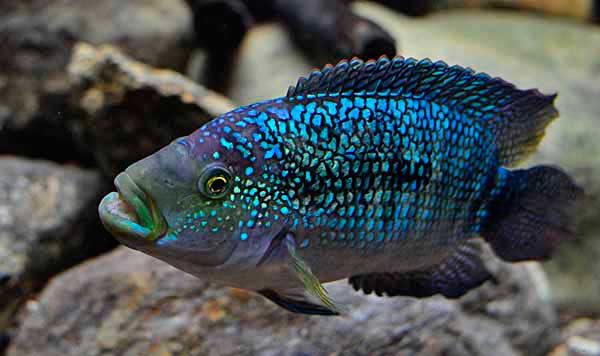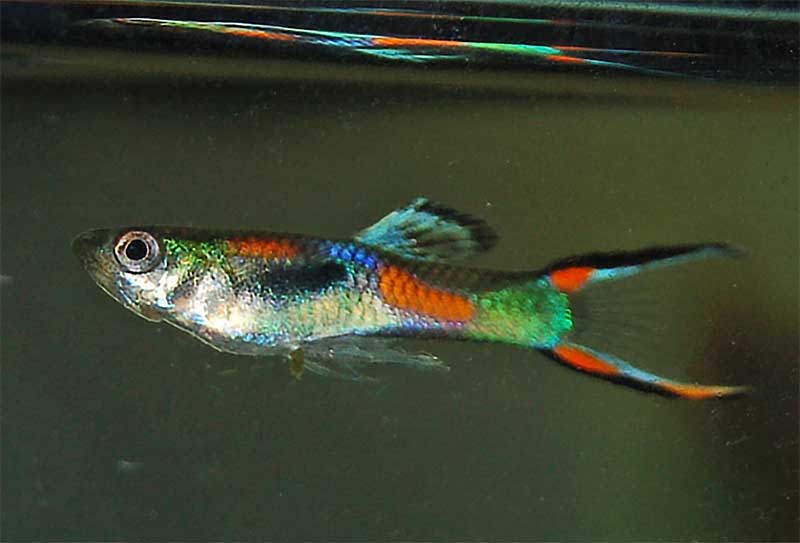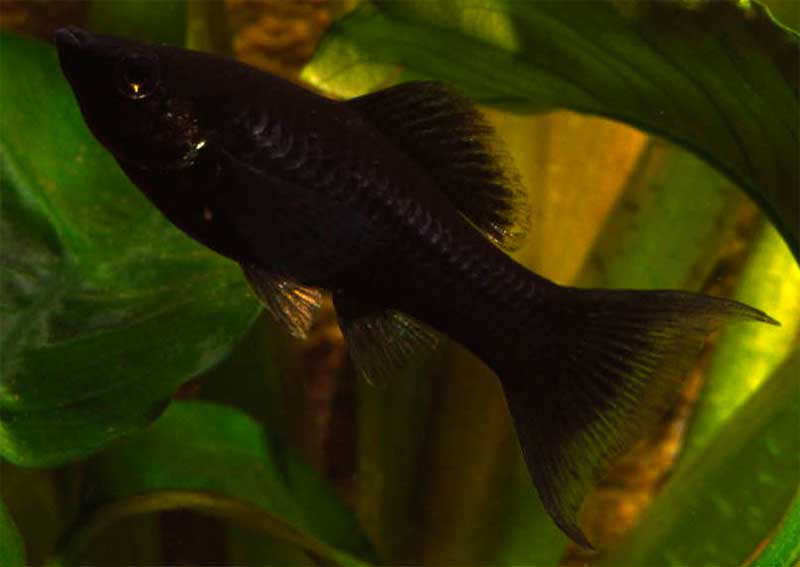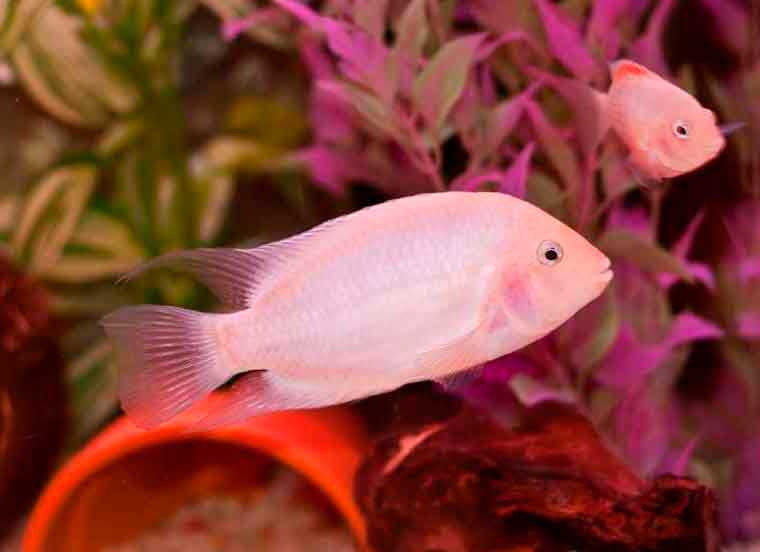Guppy perhaps the most famous aquarium inhabitant. Many aquarists began to familiarize themselves with the wonderful world of the aquarium just by keeping these fish. This is understandable. They are very unpretentious and beautiful, especially the males with their tails similar to gypsy skirts.
| domain | Eukaryotes |
| kingdom | Animals |
| type | Chordates |
| class | Radial fish |
| division | Carpozoan |
| Family | Peciliidae |
| genus | Pecilia |
| species | Lebistes reticulatus |
Habitat: Native to Venezuela, Northern Brazil, Guiana. Occurs also on the islands of Barbados and Trinidad. To combat the larvae of malarial mosquitoes dispersed throughout the warm waters of the world and acclimatized on all continents. Feral fish populations are found in some Russian reservoirs near warm water discharges and in lagoons.
Its name was given in honor of the English priest and scientist Robert John Lemcher Guppy, who in 1886 made a report to the Royal Society about fish giving birth to live fry and not laying eggs. After his report, the priest was ridiculed by scientific men. (Science… it has been so often misguided – poor thing.)
Guppy description
The female is gray and unremarkable. In nature they reach a length of six centimeters. Males are somewhat shallower than their girlfriends in length reach four centimeters. But they are the owners of luxurious tails, which are painted in different colors. And in breeding varieties have a different shape.
Guppy aquarium keeping
Guppy are unpretentious fish. Optimal temperature of 24 ° C. Can survive a short-term drop in temperature to 15 ° C, and increase it to 30 ° C. Salt content in the water should be close to average values. Hardness is desirable 7-9 °dH. The pH is 7.
Feeding
Adults can be fed almost any food. They can easily tolerate the absence of live food. And they feel fine when fed with dry food. Although, of course, you should not abuse their endurance. Live feed is necessary if you want to grow healthy, beautiful and prolific fish. Fish aquarium guppy with pleasure eat moths, trubichnik, daphnia, cyclops, enchitreus, filamentous algae.
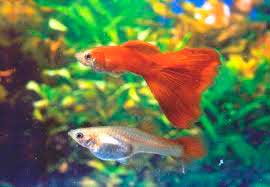
Compatibility with other fish
Guppy are peaceful fish and they can be kept together with other species with similar conditions. However, sometimes they sometimes show curiosity to the long fins vualekhvostov and mustache scalaria and gourami, than much annoyance to their owners. In this case, they are better still – all – still set aside in a separate aquarium. In the damaged fins are no good and besides it is dangerous festering. Also need to pick up neighbors for them from peaceful fish that will not damage their magnificent fins.
These mischief makers are inhabitants of all layers of water. Although they are more likely to stay in the middle layers. They will not hide from you in the thickets of plants or under a rock. They are all the time, in plain sight performing an endless dance, attract attention to the aquarium giving it dynamism.
Guppy breeding
Aquarium fish guppy – viviparous. In reproduction are easy. If the aquarium in which they are contained, densely planted with plants, then from time to time you will find new fish – it is a guppy fry, which are hiding from voracious congeners in the saving thickets.
Nevertheless, if you want to get a good brood, it is desirable to arrange a spawning ground in which the female ready to give birth is deposited. The easiest way to distinguish a pregnant female before feeding. Her abdomen is enlarged, at the anus appears a black spot. A few days before spawning, the abdomen takes a kind of square shape.
Preparing the spawning ground
The spawning ground can be an ordinary three-liter jar, on the bottom of which is laid elodea and pressed with a stone. A bunch of riccia can be thrown on the surface. In the water column can be let float Javanese moss and Thai fern. These plants form thickets in which can hide fry guppy from their mom, which can sometimes eat their offspring. Childbirth usually occurs at dawn. The litter can be 20 – 150 fry, depending on the maturity of the female and the conditions of its content and feeding. After spawning female guppy should preferably be removed from the spawning tank in a common aquarium.
Caring for fry
Fry are fully formed fish. The first feeding is 2-3 hours after birth. Feeding young fish is not difficult. You can feed even dry fodder, just do not forget them, properly grind them into dust. It is desirable to feed small cyclops, dry grated daphnia. Feeding once a day. Some authors recommend feeding newborns three times a day in small portions. After determining the sex switch to two meals a day. And sexually mature fish (4-6 months) fed once a day.
Keep in mind that they are prone to obesity and their gluttony will be on your conscience. Don’t overfeed! Underfeeding is better. Remains of food must always be removed. At two weeks of age, fry are transferred to the diet of adult fish. As the growth of young fish it should be transferred to a larger aquarium. Also not superfluous will not be superfluous artificial aeration of water.
Through the efforts of breeders, many different varieties have been bred. They differ in the shape of fins and coloration. However, some breeding breeds are somewhat more demanding to keeping conditions than the natural form.
It is not possible to cover all issues related to guppy in one article. This is just a small overview article that gives the basic concepts about this species. A more detailed discussion of this beautiful fish is ahead.
